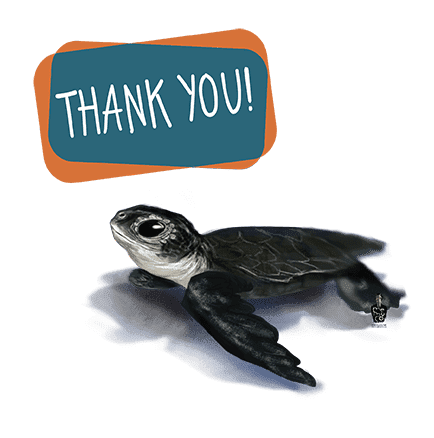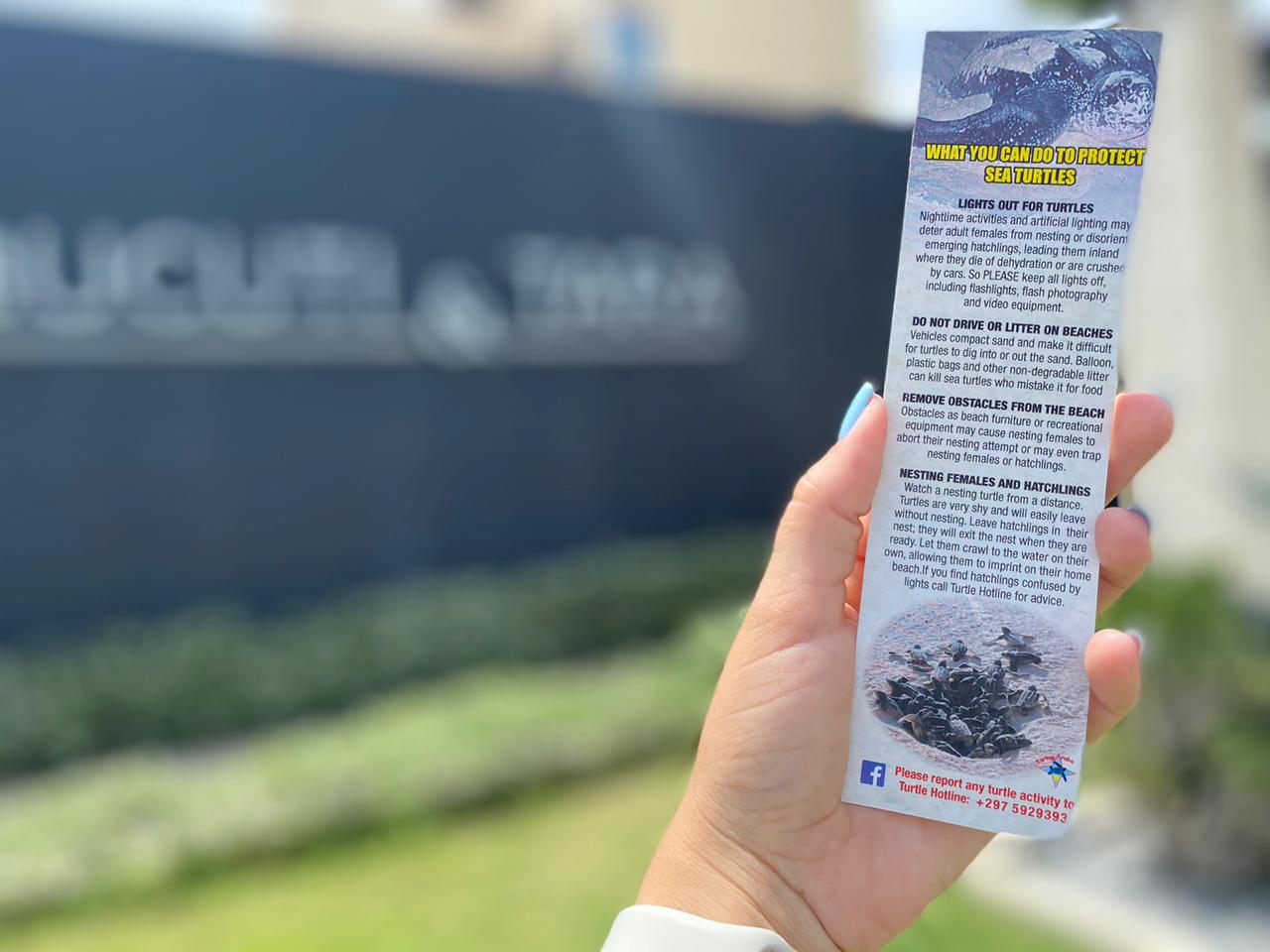Discover more about our magnificent sea turtles and monitor their nesting season to observe when nests are laid and anticipate hatching times.
Aruba hosts nesting sites for four sea turtle species: the Leatherback, Loggerhead, Green, and Hawksbill.
Nesting typically occurs between March and September, while hatching spans from May to November. The incubation period lasts around 60 to 70 days.
Bucuti & Tara collaborates closely with the Turtugaruba Foundation, together we are dedicated to ensuring the survival and flourishing of these precious turtles!
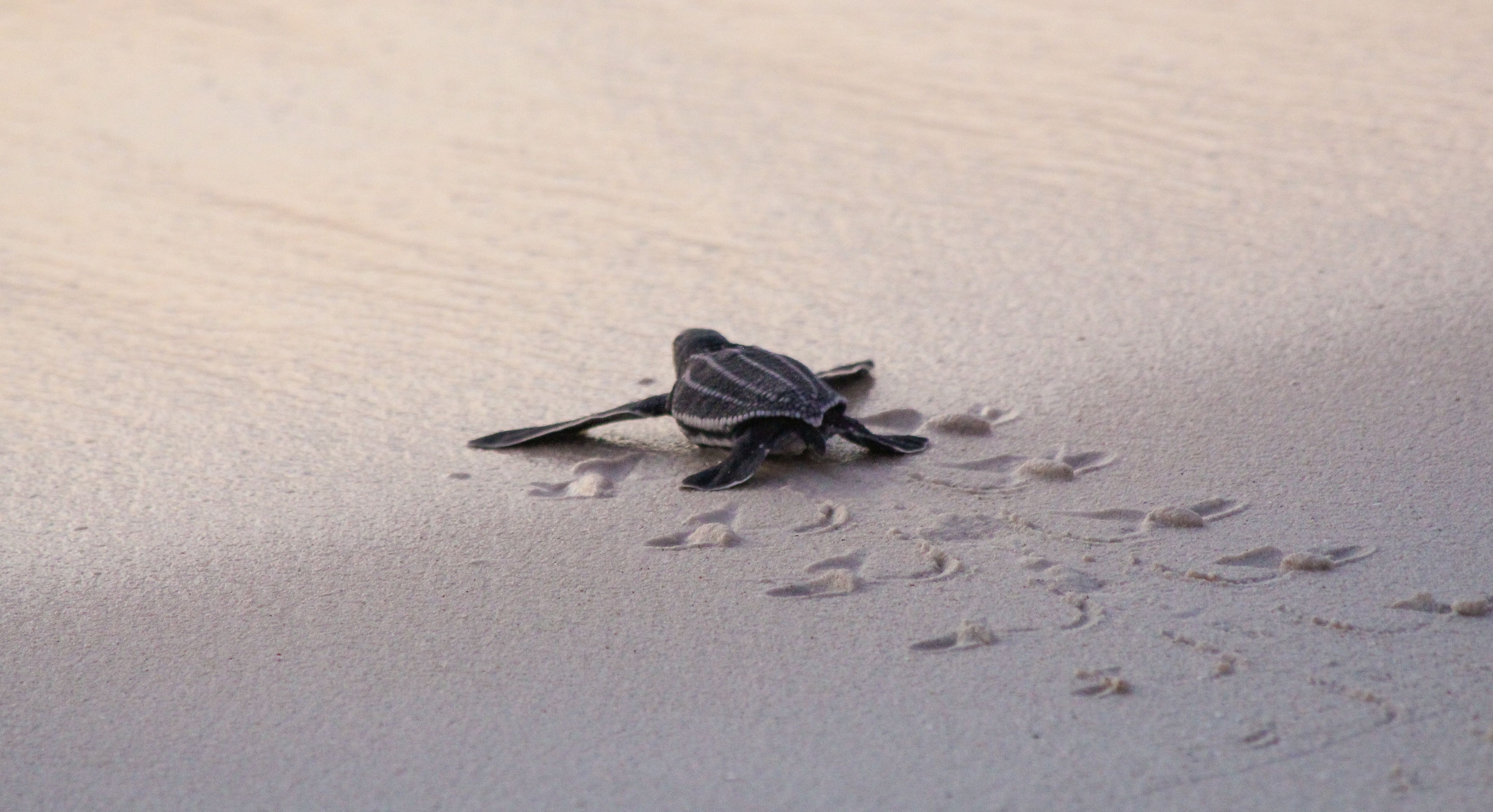
Our team members at Bucuti & Tara regularly participate in informative presentations and training sessions organized by the Tortugaruba Foundation.
These sessions educate us about the nesting process of turtles and how we can contribute to their protection. One significant challenge turtles encounter is light pollution, which can lead them to confuse artificial lights with the moon.
While the resort was intentionally built far back from the ocean in the spirit of sharing its space with nature, it also has low-level, amber lighting throughout the exteriors and walking path so turtles are not dissuaded from approaching to nest and hatchlings do not mistake the resort lighting for the moonlight that is vital for them to follow on their first journey to sea, which leaves a lifelong imprint in their brain so they can return to their natal beach to nest. Guests receive bookmarks with tips such as closing their curtains at night to minimize distracting light that can disorient nesting mothers and emerging hatchlings. They learn how to witness nature from afar without impeding on a nesting site and how to spot hard-to-see, but fragile nests. Guests come away feeling empowered knowing their stewardship continues to help vulnerable Leatherback sea turtles sustain and grow their diminished, but vital population.
Read our latest update on our Blog: Protecting Aruba's Precious Sea Turtles
Did You Know…
*Source: Turtugaruba
Our May 2025 Update:
We’re thrilled to share the latest sea turtle nesting activity near Bucuti & Tara Beach Resort!
Here are the dates and locations where turtle nests have been laid, along with their estimated hatching periods:
Manchebo – April 12: Expected to hatch between June 11 and June 21
Costa Linda (Water’s Edge) – April 28: Expected to hatch between July 17 and July 27
Bucuti & Tara (Costa Linda side)– May 11: Expected to hatch between July 10 and July 20
We are happy to share that we currently haver 4 nests in walking range of Bucuti & Tara Beach Resort, with one on it's edge with Manchebo and one with Costa Linda! Staying with Bucuti during hatching season and want to be on the call list? Please contact our fantastic concierge team concierge@bucuti.com.
We’ll continue to keep you updated and will share the exciting news the moment a nest is confirmed in front of the resort.
To bring this magical season to life, we’ve included a heartwarming photo from 2024 of a newly hatched turtle making its way to the sea.
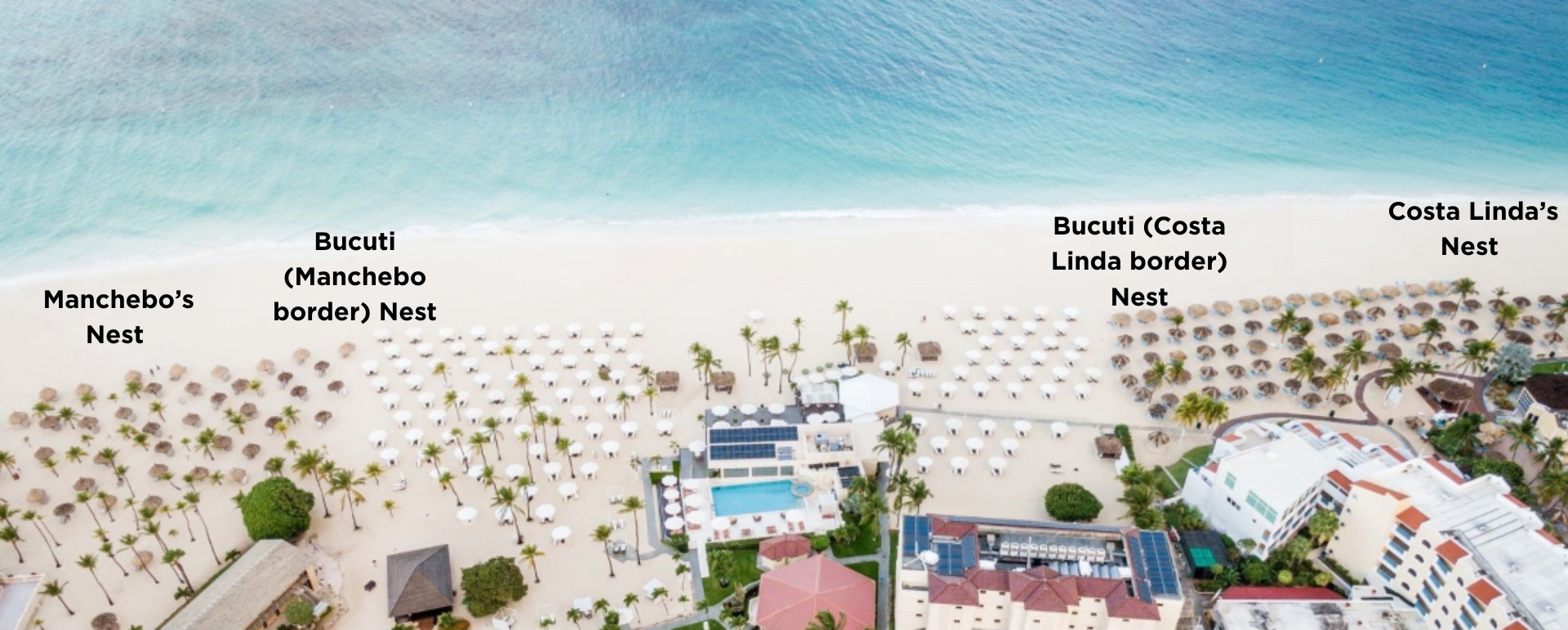
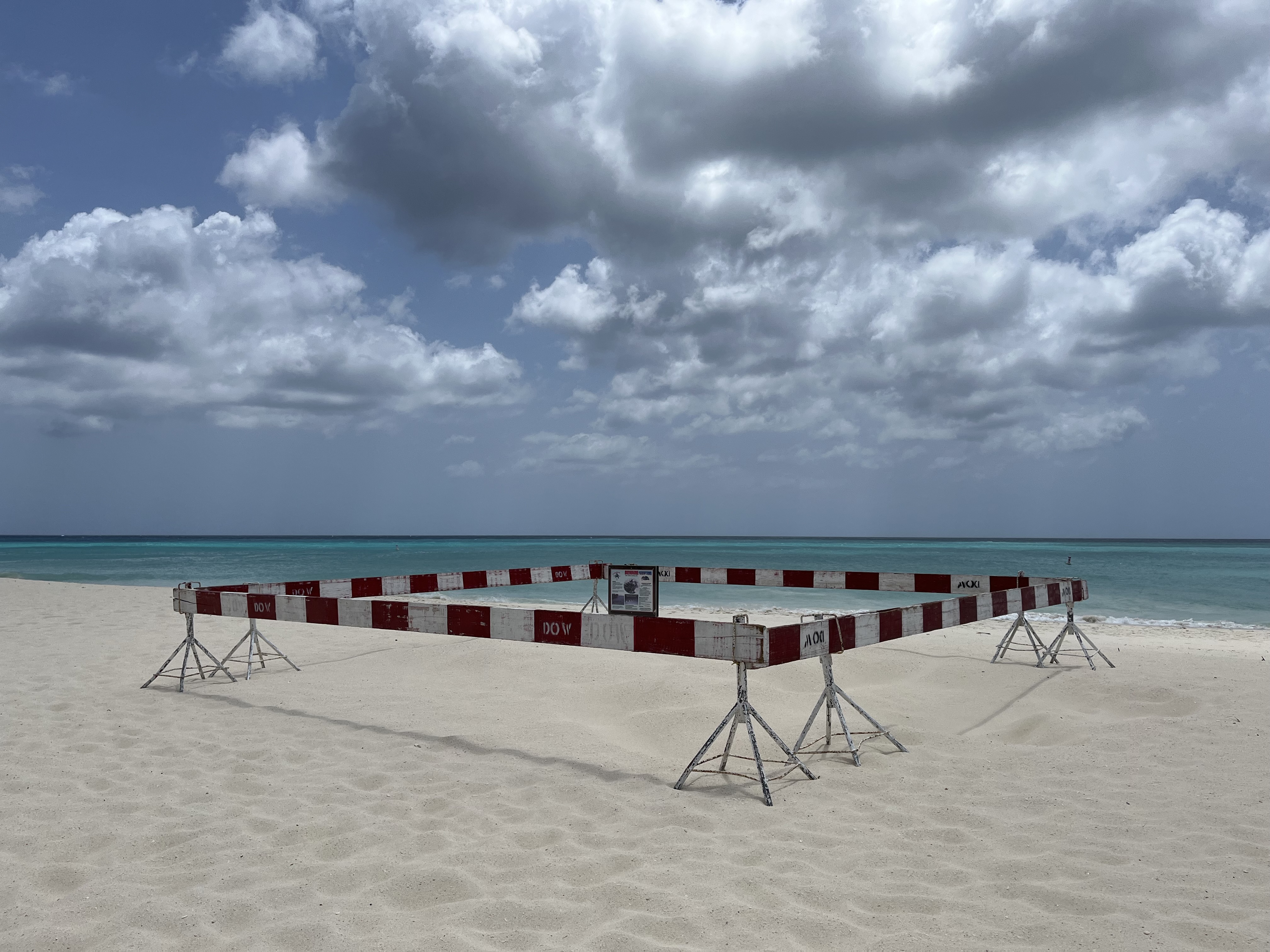
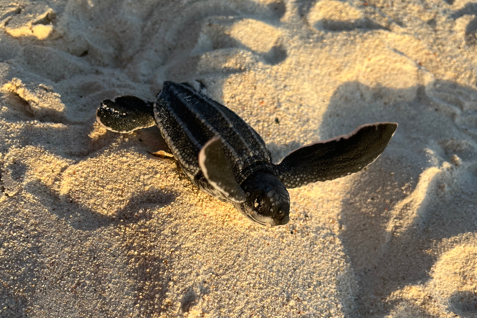
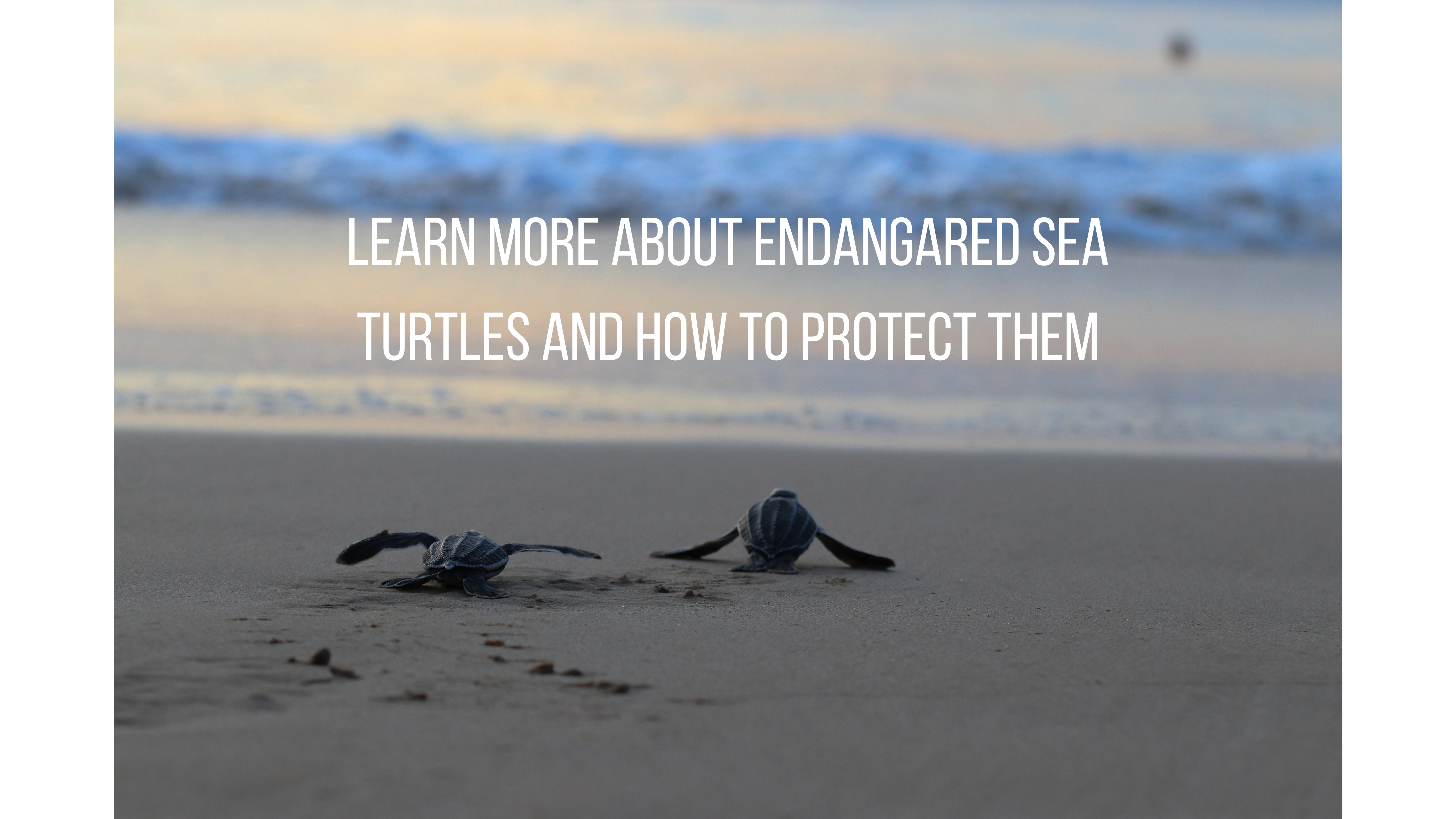
Making a positive difference for sea turtles is as simple as following easy steps we have outlined below:
1. Sea Turtles nest in all the sandy areas all around Aruba. It is tempting to touch and film turtles when you see them. Make sure to give turtles plenty of space and do not disturb females as they emerge from the ocean looking for a place to nest. Turtles dig the dark. Sea turtles need dark beaches for nesting and for navigating their way to the ocean. Light can deter females from coming ashore to nest as well as lead newly born hatchling away from the water and towards danger. Turn off your smartphone flashes and lights to ensure a safe and welcoming environment for turtles.
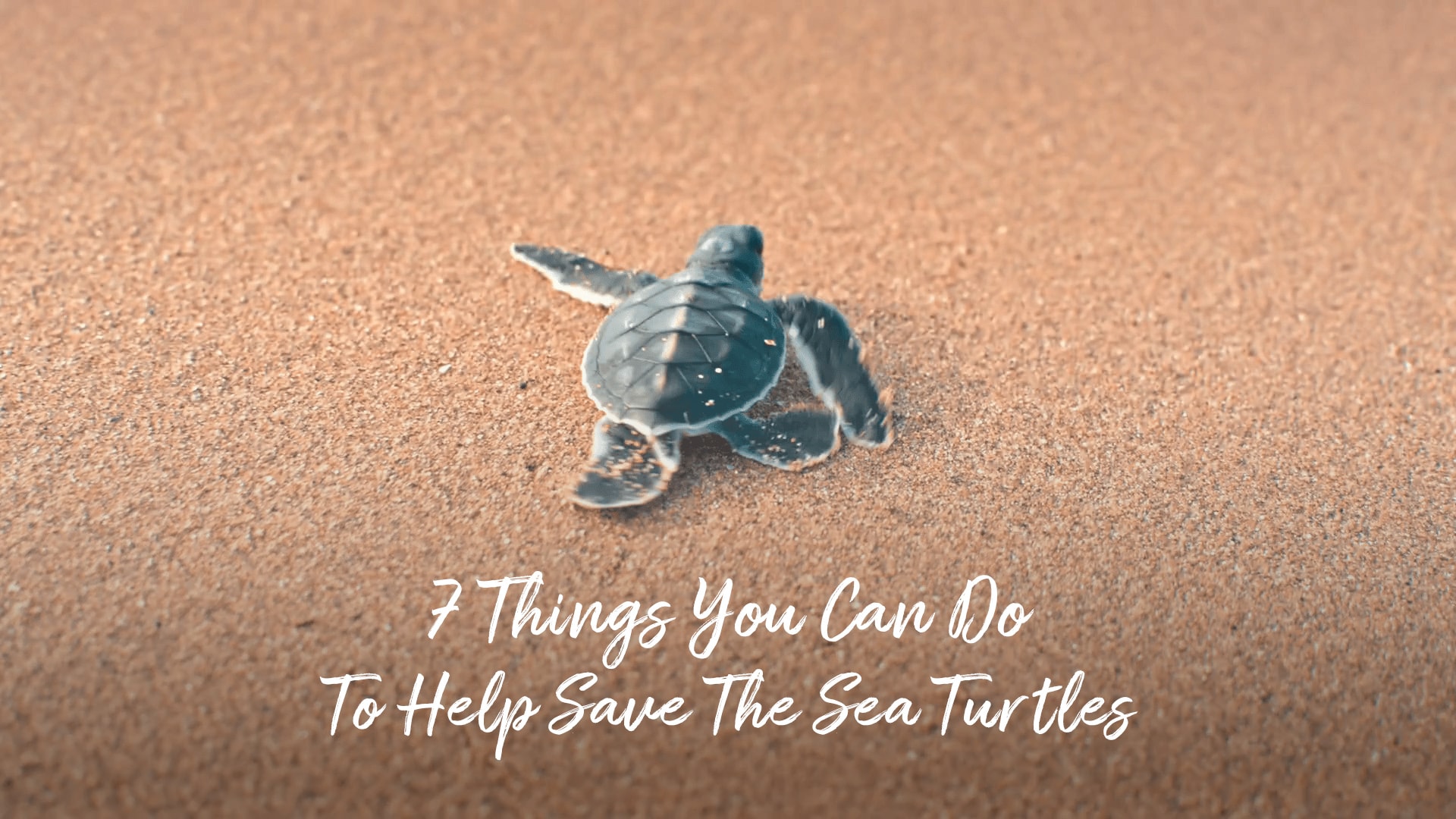
2. Leave No Trace. When visiting a beach where turtles nest, remove your trash (and trash left by others) and any obstacles that may become hazards for nesting sea turtles and hatchlings like beach furniture, holes, and sandcastles. Turtles need clean and clear beaches (and oceans!) to increase their chances of survival. Participate in our monthly beach clean up designed to remove debris dangerous to turtles and wildlife.
3. Only drive on marked roads on Aruba. Off-road vehicles are dangerous to turtles and all kinds of wildlife in Aruba. Stay only on marked roads, no matter what you see or hear, this is a problem we are trying to solve.
4. Just say no to plastics! Sea turtles and other ocean life mistake plastic as food and ingest it. An estimated that more than 100 million marine animals die each year as a result of eating or getting entangled in plastic.
5. No more balloons. Helium balloons can travel long distances, get caught in electric lines, and hurt animals like birds and sea turtles, which similarly to plastic bags can be mistaken for jellyfish.
6. Choose sunscreen carefully. Chemicals in some types of sunscreen can damage coral reefs and pollute turtle habitats. Avoid any sunscreen with "oxybenzone" and look for brands labeled as "Reef Friendly" and avoid sprays that can pollute the sand where turtles nest.
7. Climate change affects the health of coral reefs which are vital to turtles' survival. A warming planet also skews sex ratios in baby turtles, changes the abundance and distribution of prey, increases erosion of nesting beaches, and more. You can advocate for businesses and governments to reduce their emissions and reduce your own as well.


The largest of the sea turtles, leatherbacks reach more than 1.8 m (6 ft) in length and more than 640 kg (1,410 lbs) in weight. During their long migrations, leatherbacks regularly dive to depths greater than 1,000 m (3,281 ft) in search of gelatinous zooplankton to eat. Leatherbacks are rapidly declining in many areas of the world.
For all life stages, gelatinous zooplankton (jellies and jelly-like organisms)
The leatherback is the only remaining member of its taxonomic family (Dermochelyidae).
Leatherbacks rely on a unique suite of adaptations including large body size, changes in activity and metabolic rate, peripheral insulation (i.e. fat), and adjustments in blood flow to maintain stable core body temperatures in varying water temperatures from temperate to tropical latitudes.
The largest leatherback ever reported was an adult male found in Wales. It was greater than 2 meters (6.6 feet) long and 900 kg (1980 lbs) in mass.
The longest recorded leatherback migration was 13,000 miles – one way!
Leatherbacks dive much deeper than other turtles, regularly reaching depths beyond 1,000 m (3,281 ft). The leatherback’s deepest recorded dives exceed 1,250 m (3,900 ft).

Loggerheads are named for their large heads, with jaws powerful enough to crush an adult queen conch. Like most sea turtles, loggerheads are famed for their vast migrations. As a species that may travel thousands of miles across ocean basins, loggerheads are in grave danger due to worldwide habitat loss and incidental capture by fishermen.
For all life stages, mostly benthic invertebrates (crabs, other crustaceans, and mollusks) and occasionally jellies
Loggerheads exhibit trans-oceanic developmental migrations from nesting beaches to immature foraging areas on opposite sides of ocean basins.
A large juvenile loggerhead named Adelita was the first sea turtle to be tracked by satellite across an entire ocean basin.
Her approximately 6500 mile journey from feeding areas off Baja California, Mexico, to coastal areas off her natal Japan corroborated the link across the North Pacific Ocean established by genetic studies.
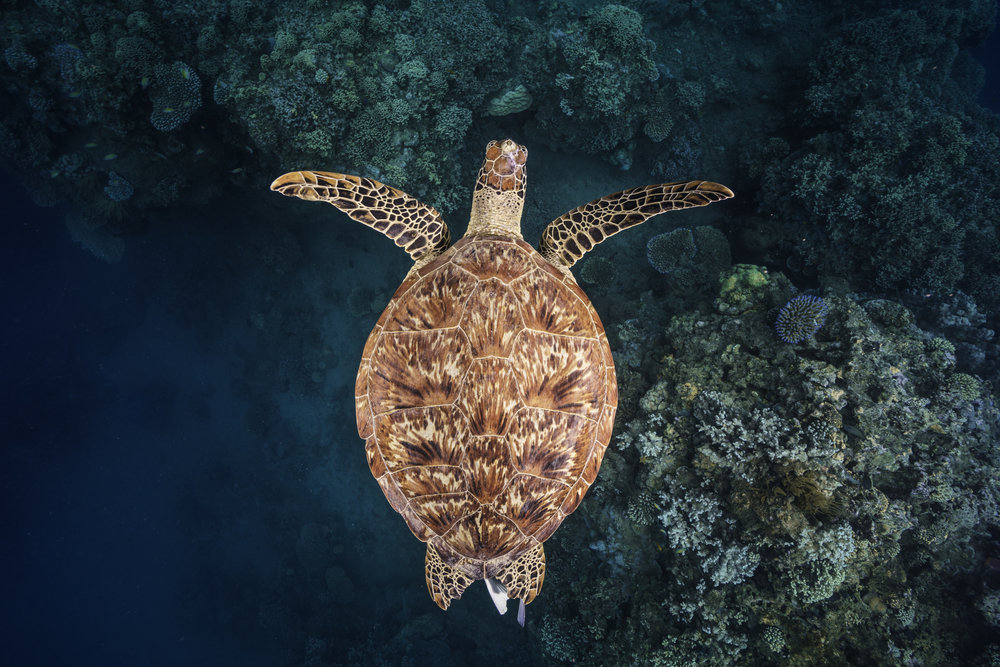
The green turtle has the most numerous and widely dispersed nesting sites of the seven species, and was once highly sought after for its body fat – a key ingredient in the popular delicacy, ‘green turtle soup.’ Although it has become illegal to trade them in many parts of the world, green turtles and their eggs continue to be consumed.
For immature stages, soft-bodied invertebrates such as jellies and jelly-like organisms.
For later immature stages and adults, mainly herbivorous, but also sessile invertebrates such as sea pens soft corals
Green turtles were important for European explorers to the New World; they provided an essential source of food, and they helped crews navigate around islands at night by the increased volume of their aggregated breathing
The former abundance of green turtles in the Caribbean is estimated to have been as high as 500 million individuals
Green turtles nest in highly diverse types of habitats, including archipelagoes, isolated coral atolls, mainland beaches, in all tropical and sub-tropical oceans
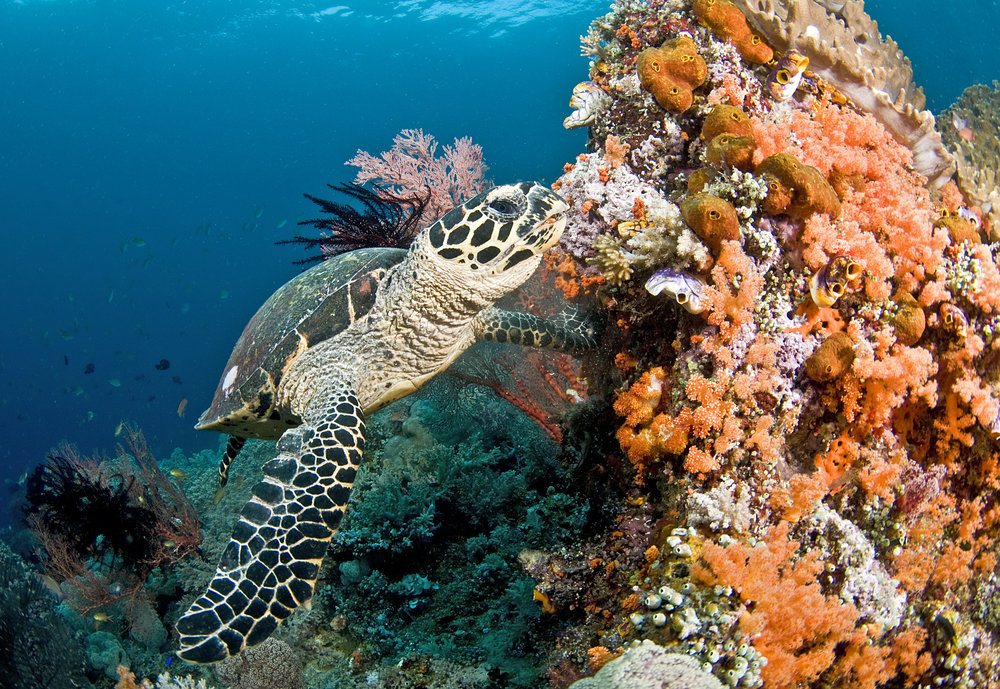
Named for its sharp, pointed beak, the hawksbill feeds primarily on reef sponges, invertebrate organisms whose bodies contain tiny indigestible glass needles. The hawksbill has a beautiful, translucent shell, which has long been exploited for use in tortoiseshell jewelry. Though international trade of tortoiseshell has been prohibited, illegal trafficking continues.
Large juveniles and adults predominantly eat sponges and other sessile invertebrates associated with coral reefs and rocky reefs
Hawksbills are the only marine consumer whose diet predominantly comprises sponges, and thus play a major role in tropical, coral reef ecosystems
Hawksbills commonly nest within beach vegetation on secluded, low-energy beaches
Hawksbills are probably the most endangered sea turtle population in the world.
For additional information please check our Blog post:
Celebrating Aruba's First Visitors - Sea Turtles
